
COMING JANUARY 2024
The tantalising story of Alejandro de Tomaso. His earliest years, his racing endeavours, his complicated character, his lavish cravings, his beautiful automobiles, his many successes, his numerous defeats, his daring adventures, his mergers and acquisitions, his countless friends, his uncountable enemies, his rise and fall yet mainly all the nuances. Researched and written by professor Paolo Tumminelli, illustrated with an abundance of archive pictures.
The archive edition comes in a luxury box, limited to 250 numbered copies only. Aside from the book, this box includes a bespoke folder with 5 genuine documents from the de Tomaso archive – invoices, telexes, internal notes, engine adjustment notes,….
A tailor-made alloy plate on the box shows the number of the book
Hardcover in linen, 30×30 centimetres, 276 pages, English

The tantalising story of Alejandro de Tomaso. His earliest years, his racing endeavours, his complicated character, his lavish cravings, his beautiful automobiles, his many successes, his numerous defeats, his daring adventures, his mergers and acquisitions, his countless friends, his uncountable enemies, his rise and fall yet mainly all the nuances. Researched and written by professor Paolo Tumminelli, illustrated with an abundance of archive pictures.
Hardcover in linen, 30×30 centimetres, 276 pages, English
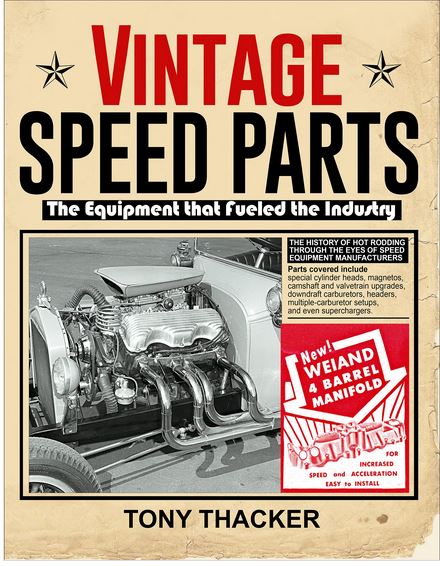
Follow the history of hot rodding through this nostalgic look at vintage speed equipment.
When most people think of speed parts, they rewind a few decades and think back to the Ford flatheads that were so prevalent in the 1940s and 1950s. However, did you know that the speed parts industry began way back in the Model T era? It’s true. As soon as vehicles were mass produced, manufacturers were looking for ways to make them faster. Manufacturers, such as Roof, Rajo, Winfield, Miller, Frontenac, and Holley, made speed parts for 4-cylinder Model T engines and accomplished speeds of up to 100 mph!
In Vintage Speed Parts: The Equipment That Fueled the Industry, veteran hot rod historian Tony Thacker looks at the history of hot rodding through the eyes of speed equipment manufacturers. Covered chronologically, the book begins with the early 4-cylinder engines. In 1932, Henry Ford introduced the flathead V-8, which was slow to be adopted as the engine of choice in racing until the parts industry caught up. Once it did, the flathead, although interrupted by the war, was the engine to run until the automobile manufacturers introduced overhead-valve V-8 engines in the late 1940s. Chrysler’s early-1950s Hemi and Chevrolet’s small-block V-8 in 1955 spelled the end for the flattie. Both mills dominated well into the 1970s, and the speed industry was there to support all platforms in spades. During that period, every auto manufacturer made a V-8 worthy of modification, and the speed industry boomed. Eventually, the speed equipment manufacturers grew to the point of becoming corporate entities, as mergers and acquisitions became the much less interesting story.
Parts covered include special cylinder heads, magnetos, camshaft and valvetrain upgrades, downdraft carburetors, headers, multiple-carburetor setups, and even superchargers. Everyone figured out how to make engines more powerful, upgrading with the type of parts that were being produced decades later, even to today. Join in the fun of reviewing the history of speed through this fascinating tale of vintage speed parts.
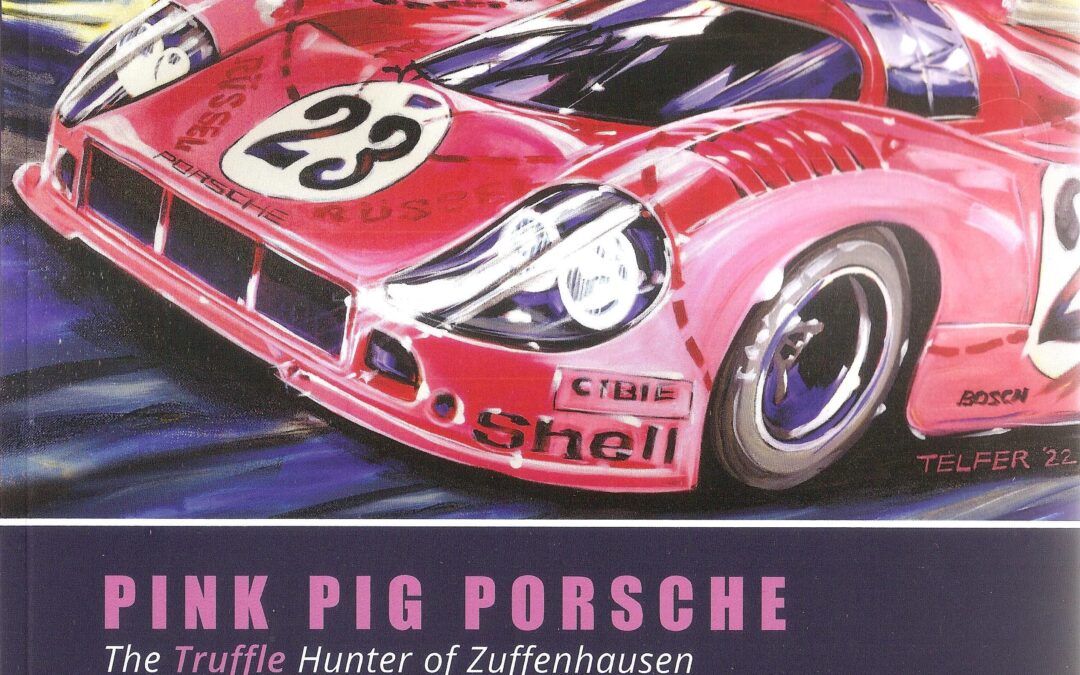
PINK PIG PORSCHE The Truffle Hunter of Zuffenhausen is a thorough photo narrative of the Pink Pig’s motorsports history which includes over 125 legendary images, many of which are exclusively from the Porsche Archive and from other unpublished photography sources.
Renowned Porsche historian and author Lee Raskin conveys a wonderful tale about the legendary Pink Pig Porsche and its unique livery — which continues to span beyond five decades.
Built especially for the 1971 Le Mans 24 Hour Race, Porsche AG created the special-bodied TYP 917/20-001 that would be uniquely painted pink along with thirteen German butcher-cut names covering its body — that instantly became known as the Le Mans Pink Pig by the motorsports media.
In recent years, tens of thousands of Porsche enthusiasts have visited the Porsche Museum at Stuttgart-Zufenhausen to meet this legendary 917/20 Pink Pig.
Today, Pink Pig memorabilia has become extremely popular — in the form of designer clothing, model racing cars, ‘Piggy’ banks, coffee and beer mugs, cookies, and dynamic Pink Pig posters and collectible art work.
Pehaps the most exciting Pink Pig news of the day is the acquisition and reinvention of the original Porky’s Pig by the renowned motorsports artist, Kelly Telfer…who has created a very unique Pink Pig display for worldwide Porsche-related events, such as the annual Porsche Club of America’s Porsche Parade, and Werks; as well as the famed Amelia Island event.
The complete motorsports story is included in PINK PIG PORSCHE: The Truffle Hunter of Zuffenhausen.
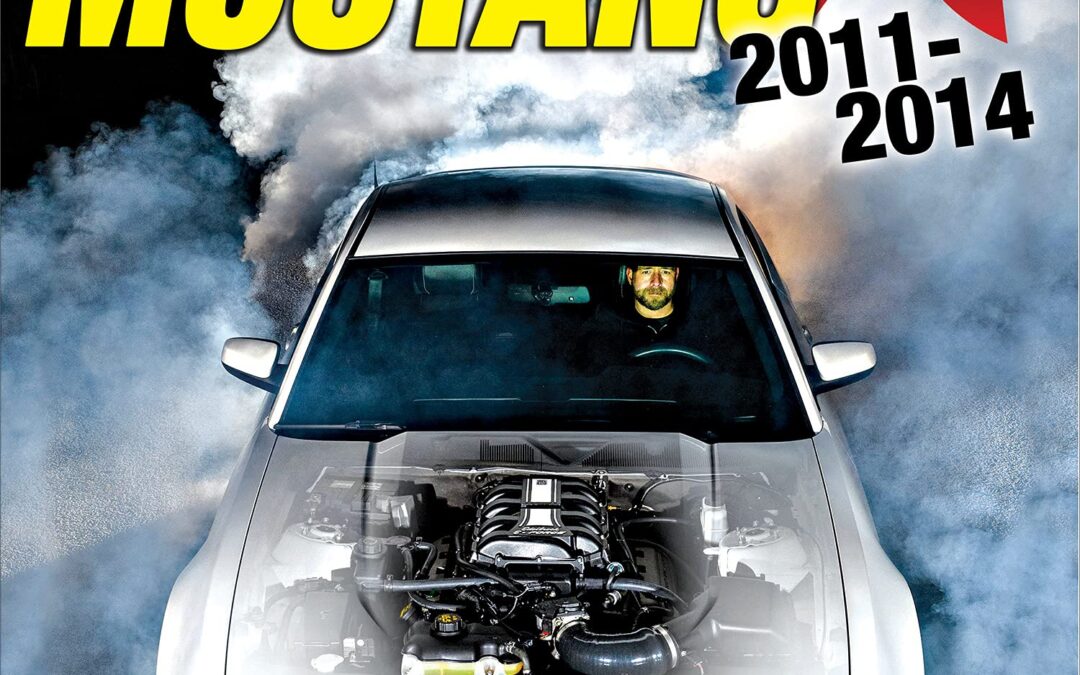
Maximize the potential of your 2011–2014 Mustang with this new book! The Ford Mustang has seen quite an evolution in its 50-plus years of existence. Times change, consumer demands change, and sometimes, you stop and wonder, “How did we get here?” Ford’s designers and its customers were thinking the same thing in the early 2000s. The evolution from the classic original design to the New Edge styling of the 1999–2004 models had some scratching their heads. Ford decided to take a bold turn back to the Mustang’s roots with the fifth-generation model, which made its debut for the 2005 model year and lasted through 2014. Echoing the Mustang fastback design of the 1960s, Ford inspired a path of retro design that the Camaro and Challenger followed shortly thereafter. The move proved incredibly popular with enthusiasts. Of course, with car enthusiasts, the immediate thought was, “How can we make this new Mustang even better?” The big news in 2011 was the introduction of the new 5.0-liter Coyote engine, which was a huge upgrade over the previous 4.6-liter engine. In Ford Mustang 2011–2014: How to Build and Modify, Mustang expert Wes Duenkel takes you through the entire car, system by system, to explore ways to get more performance out the last of the fifth-generation Mustangs. Included are chapters on engine modifications, brake and exhaust upgrades, power adders, chassis and suspension upgrades, cooling system modifications, and EFI and tuning tips. Wheels and tires, differentials, electronic upgrades, and more are also covered. The 2011–2014 Mustangs are finding their way into the affordable category at present with warranties expiring and acquisition costs being very reasonable. Of course, as with all generations of Mustang, there is a robust aftermarket to explore for performance parts and accessories. Ford Mustang 2011–2014: How to Build and Modify covers it all and will help you make your Mustang everything you want it to be.
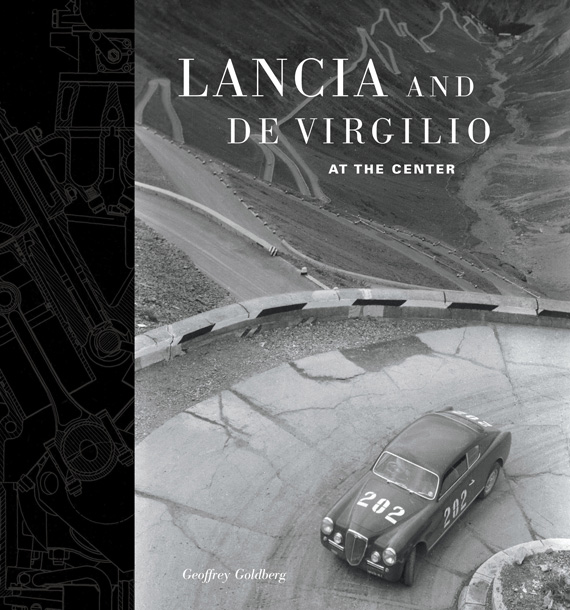
In the years following the Second World War, Lancia was the most innovative automotive company in Italy, if not in the world. The Lancia cars were technically advanced, with an elegant and competitive design on the track. For more than four decades, Francesco de Virgilio was one of the primary figures in the history of Lancia. De Virgilio entered the company as a young engineer in 1939, becoming a member of the Lancia family, when he married the niece of the founder Vincenzo Lancia, in 1947. In Lancia and de Virgilio, the author Geoffrey Goldberg examines the life and career of De Virgilio from multiple perspectives. Drawing on a large number of original documents, technical drawings and photographs from the archives of the De Virgilio family, Goldberg reveals the essential role of De Virgilio in the projects that defined Lancia during its best years in the 1940s and 50s. These include the development of the first production V6 engine, launching and improvement of the Lancia Aurelia, and the management of the short racing program of the company, which produced the classic D50 Formula One car. In addition to engineering and competitions, De Virgilio was directly involved in the events that effected the management and position of Lancia in the Italian automotive industry. In 1955, the family released its control of the company, leading to its eventual acquisition by Fiat in 1969. Through all these upheavals, De Virgilio continued to experiment and innovate, working on multiple projects, from diesel engines for trucks to the first versions of the rally car Stratos in the 1970s. Whatever the assignment, his persistent search for excellence remained a constant element defining Lancia, up to his departure from the company in 1975. Despite his technical successes and his popularity within the company, De Virgil’s contributions have been widely neglected to date.
Produced with the support of the RevS Institute for Automotive Research, Lancia and de Virgilio is the product of more than six years of meticulous research. The book is illustrated with hundreds of unpublished photographs that depict the images of Francesco de Virgilio at work, on the track and at home with his family, as well as dozens of drawings, projects and other finds. In addition to this abundance of details and information, the book, also captures the vibrant spirit of Italian, culture and society during the post-war period. Lancia and de Virgilio provides unique insight into both automotive and social history. The book was greatly appreciated by enthusiasts: it won several awards, including the Cugnot Award of the Society of Auto Historians for the best book of the year. It was also reviewed by the New York Times and the Republic, a rather exceptional event for a book on a company and its history already seventy years in the past.
This limited edition reprint is an opportunity not to be missed for those who did not secure the first edition in 2014.

The Navy’s acquisition of the B-24D as a long range patrol bomber/sub hunter (PB4Y-1) and as a long range photo recon platform (PB4Y-1P) marked a major shift in patrol doctrine and the eventual end to the flying boat patrol plane. The Navy Liberators became a one ship strike force as they roamed thousands of miles on sector searches and destroyed over a 1,000 ships and hundreds of aircraft. The original under-gunned early B-24Ds were up-gunned with bow turrets from Consolidated, ERCO, MPC, and Emerson and with Sperry ball turrets in their bellies when search radar was not fitted. The B-24Ds were replaced with B-24Js, B-24Ls, and B-24Ms all designated PB4Y-1/1Ps. The PB4Y-1P photo planes were used to map and survey Japanese strongholds before invasions and discover new airfields and fleet movements. No mission was too far or too dangerous. It was in a remote control PB4Y-1 flying bomb that Joe Kennedy was killed over England. After the war, photo squadrons continued to operate the photo version into the early 1050s. The book covers all engineering details and structures and covers all the PB4Y-1 squadron’s history and most combat operations.
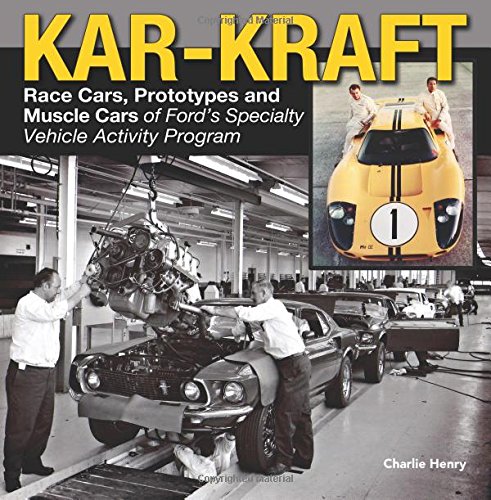
The story of Kar-Kraft began, as did many others in the automotive industry, with an axe to grind. In 1963, Ford was seriously interested in purchasing Ferrari. Ferrari was a legendary brand with considerable success in racing, and Ford saw the acquisition as a great way to be instantly successful in the racing arena. When Enzo Ferrari realized that Ford would not give him complete control of the racing program, he backed out of the deal late in the process. Ford had spent millions in vetting and audits, which then set in motion a vengeful response against Ferrari. The result was the unthinkable: Ford beat Ferrari at Le Mans.
Ford wanted to become competitive quickly, but it did not have the race history or resources in house. To remedy the situation, Ford searched the U.K. for an independent company to help accelerate its race car development. It first settled on Lola Cars and set up Ford Advanced Vehicles. Later, Ford brought its LeMans effort to the U.S. and the Kar-Kraft relationship was established. Although Kar-Kraft was technically an independent company, it really only had one customer: Ford Special Vehicles. Kar-Kraft’s story doesn’t begin and end with the GT 40 that took the win away from Ferrari at Le Mans. Ford expanded upon the program and organized an all-out assault on racing in general. Cars were prepared for Trans-Am, NASCAR, NHRA, and Can-Am competition. Street versions of the Boss 429 were assembled under its roof. And fabled prototypes including the LID Mustang, Boss 302 Maverick, and Mach 2C were all assembled in Ford’s contracted race shop. And then, out of the blue, its doors closed for good on a cold day in 1970.
History tells us that Ford won Le Mans, the Daytona 500, and the Trans-Am championship. But it doesn’t tell us how this was accomplished. Author Charlie Henry (a former Kar-Kraft employee) has enlisted the help of many of his former co-workers to bring you the very first book ever published on Ford’s all-encompassing special projects facility, Kar-Kraft.
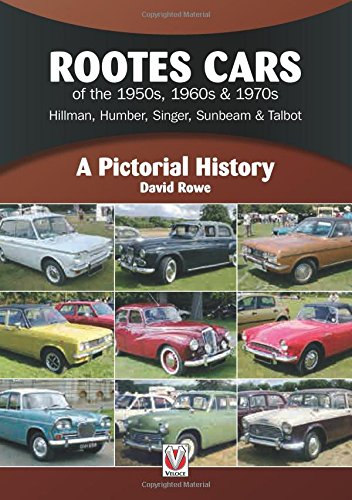
The Rootes Group, although only achieving a 10-12 per cent market share, were the sixth largest British car manufacturer: more importantly, during the 1950s, more than half the cars they produced were exported. With every model produced from 1950 onwards featured in full colour and with detailed information – including colour schemes, optional equipment, technical specifications, plus other manufacturers’ cars built using Rootes components – this is the ultimate book for all Hillman, Humber, Singer and Sunbeam enthusiasts. Cars produced by Chrysler and Peugeot after their acquisition of the Rootes Group are also included.
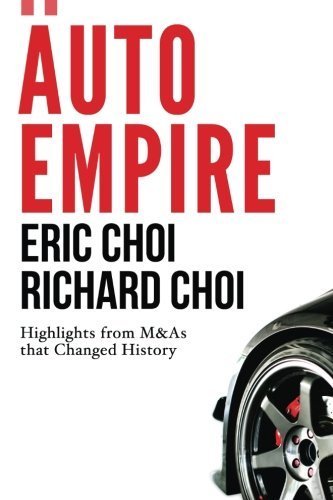
The automotive industry has a tumultuous history rife with back-room deals, brilliant innovation, colorful characters, and marked by the complete transformation of our planet. In Auto Empire, author Choi paints a compelling picture of the birth and growth of the modern auto industry. And how acquisitions and mergers, in particular, have paved the way for the auto industry of today and tomorrow. From the first steam-powered carriage, to alternative energy and self-driving cars, the world can barely accommodate the ambitions of this massive industry. But in Auto Empire, Choi fearlessly tackles the industry in all its glory and failings to illuminate how it transformed itself and the world. Choi unfolds a fascinating history that spans diverse industries, epic upheavals, and touches every corner of the world. Auto Empire seamlessly weaves the eras of the automotive industry into a thought-provoking portrait of its continued evolution through acquisitions and mergers. To think, we went from sweatshop assembly lines and 14-hour work days, to high-tech automation and digital innovation. In Auto Empire, Choi captures this amazing spirit of transformation.

Founded in 1924 by one-time railroad mechanic Walter P. Chrysler, Chrysler the car actually preceded Chrysler the corporation. With roots entwined with several pioneering automakers and industries, Chrysler made it possible for Detroit to become the Motor City. Featured here in over 200 vintage photographs is the heritage of one of Detroit’s most renowned automakers. Chrysler Heritage: A Photographic History follows the fortunes of the company, its founders, and its products for over a century. Through its acquisition of Dodge and the introduction of Plymouth and DeSoto, Chrysler rose quickly. Renowned for its advanced engineering, it surpassed mighty Ford Motor Company for second place in sales after GM in 1933. Showcasing photographs from the Chrysler archives along with in-depth captions, this new book captures the muscle of Detroit, including the corporation’s unparalleled involvement in the Second World War and the Cold War.

The problem with most generalized Buyer’s Guides is their lack of detail. In an attempt to cover every model that was ever constructed, much of the necessary data has to be omitted. While these books make interesting reading, the potential buyer that has already determined which model he or she wants to purchase, will be sorely disappointed with the woefully inadequate information they contain. Not so with this book! More than just a Buyer’s Guide, it’s a complete guide to the purchase and ownership of a 308 series Ferrari and includes a wealth of data for the owner once the car has been purchased. Consisting of three major sections, the first section helps the reader understand the history of Ferrari and the introduction and development of the 308 series cars. The second section will help you decide how, what, when and where to purchase and the third section will assist you in keeping your new acquisition in top condition with hints and tips on maintenance, repair and even modification. If you already own a 308, then this book will help you get the most enjoyment from your ownership and will prepare you for what potential buyers will be looking for when it comes time to sell. A well-written book by a respected authority on late model Ferraris and no 308 enthusiast should be without a copy.

In late 2006 the National Gallery of Victoria (NGV) purchased its first work by a member of the Bugatti family, Carlo Bugatti’s Throne chair, circa 1900. From this initial acquisition the idea of an exhibition grew, until the gallery announced it would stage Australia’s first exhibition of the work of the Bugatti family in early 2009.
The exhibition will showcase the work of three generations of craftsmen, artists and designers: furniture by Carlo Bugatti, animal sculptures by his son Rembrandt, and the legendary cars designed by Carlo’s eldest son Ettore and Ettore’s son Jean. The Bugatti family represents a fascinating and unique story in the history of art, design and automobiles during the late 19th and early 20th centuries.
Compiled by Amanda Dunsmore and John Payne, at the NGV, Bugatti: Carlo Rembrandt Ettore Jean is a comprehensive collection of the works by this remarkable Italian family that was on display during the gallery’s 2009 exhibition.
“

2013 marks a significant milestone for Aston Martin – it’s their 100th Anniversary and the start of their second century in automotive design. This comprehensive history is full of beautiful color photography and detailed illustrations from the past hundred years. Aston Martin: Power, Beauty and Soul reveals the stories behind some of the world’s most desirable motor cars. Each of the more than sixty models constructed since the 1987 Ford acquisition are featured, including concept cars, special edition models and never-before-seen bespoke orders. Each chapter details an individual model’s fascinating history and development and includes comprehensive specifications. This book is also about the dedicated people behind the scenes who brought these magnificent vehicles to life; their stories are intertwined with those of the cars.
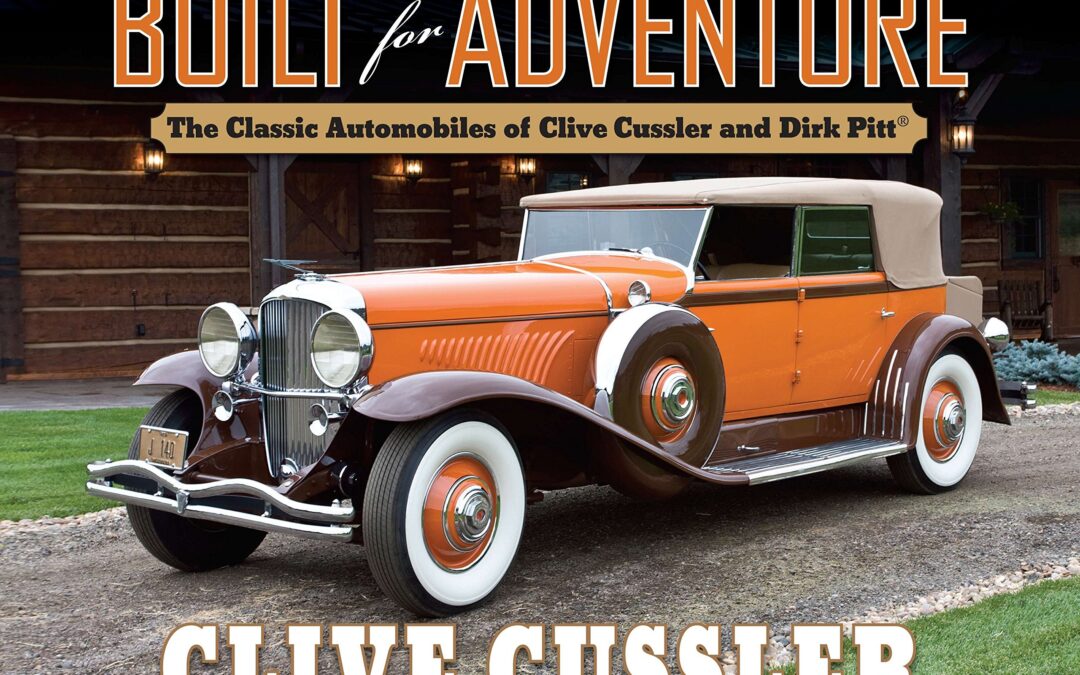
A photographic tour through Clive Cussler’s outstanding collection of antique automobiles, including those featured in his #1 New York Times bestselling Dirk Pitt series.
Fans of Clive Cussler’s bestselling Dirk Pitt series know that his hero has a soft spot for rare and classic automobiles…and that the vehicles that appear in the novels are actually part of Cussler’s own vast collection. Through stunning color photographs and warm, informative commentary, fans of Cussler and Pitt can see fifty-six of these automobiles in all their glory, and learn about the history and acquisition of each classic car. Rolls-Royce Silver Ghost Touring . . . Mercedes-Benz 630K . . . Duesenberg J-140 . . . Cadillac V-16 Roadster . . . Ford Cabriolet Hot Rod . . . Packard V-12 . . . it’s a car lover’s paradise!
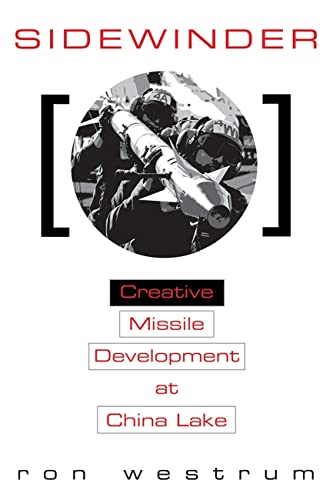
In the mid-1950s a small group of overworked, underpaid scientists and engineers on a remote base in the Mojave Desert developed a weapon no one had asked for but everyone in the weapons industry desired. This is the story of how that unorthodox team, led by visionary Bill McLean, overcame U.S. Navy bureaucracy and other more heavily funded projects to develop the world’s best air-to-air missile. Author Ron Westrum examines that special time and place–when the old American work ethic and “can do” spirit were a vital part of U.S. weapons development–to discover how this dedicated team was able to create a simple and inexpensive missile. Today, many decades after its invention, the Sidewinder missile is still considered one of the best that America has to offer.
In a time of billion-dollar weapons development contracts, astronomical cost overruns, and defense acquisitions scandals, this revealing, highly readable tale about one of the most successful weapons in history should be of interest to anyone concerned with national security.
Autobooks-Aerobooks 2900 W. Magnolia Blvd. Burbank, CA 91505 (818) 845-0707 Hours: Tuesday-Friday 10:00 AM – 6:00 PM Saturday 10:00 AM – 6:00 PM Closed Sunday and Monday Accept Credit Cards gift cardYES, We have Gift Cards - Click Here AUTOBOOKS IS OPEN...


















